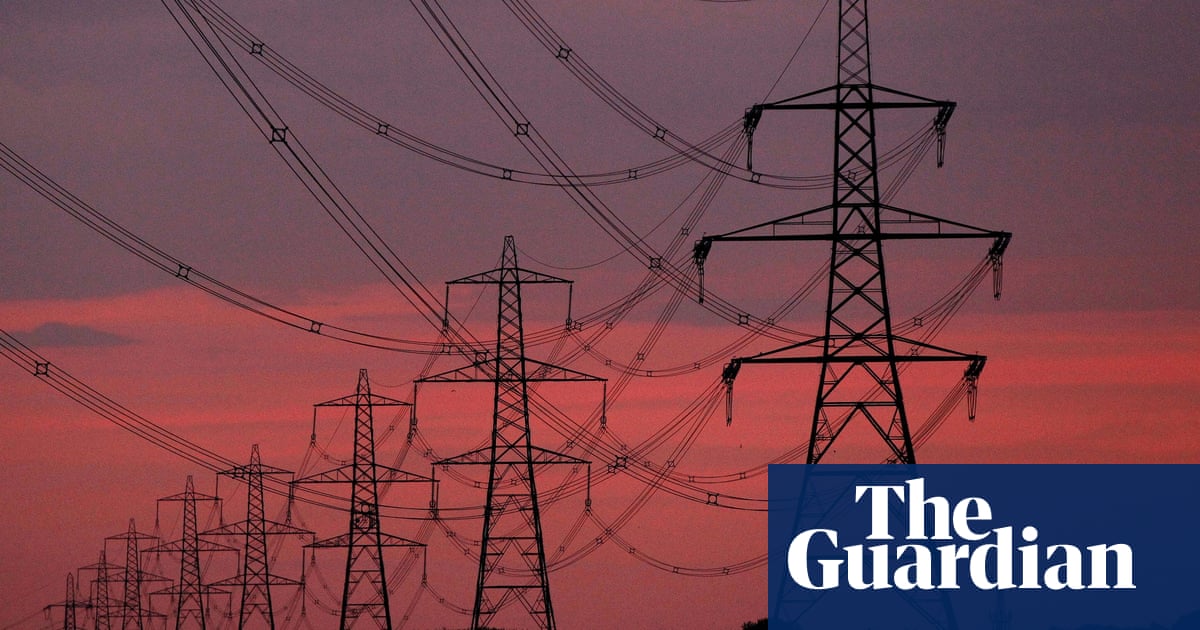- cross-posted to:
- [email protected]
- cross-posted to:
- [email protected]
Tucked away beyond the industrial landscapes of north-east Derbyshire and the M1 corridor, the Amber Valley is an oasis of greenery: ancient trees, listed buildings and public footpaths that are increasingly popular with tourists.
But Katie Hirst, a local resident, fears that appreciative visitors will vanish along with the unspoilt landscape if a route of 50-metre-high pylons is brought down the valley as National Grid intends.
“People come here for wonderful walks and the unspoilt landscape, and that would be gone, and the economy would really suffer,” said Hirst, a co-founder of Save Amber Valley Environment (Save), one of a growing number of grassroots groups opposed to pylon schemes across the country.
…
More than 600,000km of power lines will have to be unrolled across the UK over the next few years for the country to properly decarbonise. But the pylons and the renewable infrastructure that will carry them are already causing anxiety and resistance.
There were forceful statements from Keir Starmer last week, saying he would take the “tough decisions” necessary to get pylons built. The next day Ed Miliband was a little more emollient, promising to consider benefits for communities affected by the construction of renewable energy infrastructure, and community ownership of the assets, which could include onshore windfarms and solar farms.
So how is this going to work? For the government to meet the ambitious target of decarbonising electricity generation by 2030, new infrastructure – including wind turbines, on and offshore; solar farms; and new transmission systems such as pylons – will be essential.
But the other parliamentary parties either oppose pylons, or allow MPs in certain constituencies to oppose them. Local groups in some areas are also organising.
…
The Labour party says it can meet its ambition of being a “clean energy superpower” only by building the new infrastructure necessary. The decarbonising electricity target is likely to require a doubling of onshore wind capacity, a quadrupling of offshore wind and a tripling of solar power by 2030. This will require what transmission companies have described as a “colossal” investment in power grid upgrades, which will cost billions of pounds and is likely to make the country’s electricity infrastructure more visible than ever before.
The UK will need to install five times as many pylons and underground lines in the six years to 2030 as it has in the past 30 years – and four times more undersea cables than there are now, according to estimates from National Grid. Existing pylons and ageing cables will also need to be replaced. More than 600,000km of lines will need to be added or replaced by 2040 based on the age of existing transmission and distribution lines, the rollout of renewables and growing electricity demand, according to data from the International Energy Agency. This means cables will need to be rolled out at a pace of almost 100km every day for 17 years.
“Unspoilt landscape” unless Amber Valley is ancient natural woodland it’s as man made as Sheffield. 1000s of years of farming will do that. These protest groups are funded on the sly by rich local landowners to drive up the amount of compensation they’ll get for the lines being on their land so they can fuck off, I want my power to stay on without killing the climate thanks.
But Katie Hirst, a local resident, fears that appreciative visitors will vanish along with the unspoilt landscape if a route of 50-metre-high pylons is brought down the valley as National Grid intends.
Good thing climate change doesnt do things like cause massive forest fires. It doesn’t affect the view at all.
But let’s make a fair deal. No more power for Katie, and she doesn’t get pylons. Let’s make that deal with everyone who disagrees
Decarbonisation measures are becoming an existential crisis. We have to do something but the countryside is one of the few uniquely appealing aspects of the UK. If we damage it, what have we got left? We cut down most of our forests centuries ago. Our public transport infrastructure is mid and cycling infrastructure a joke.
deleted by creator
“the economy would really suffer “ Translation: The value of my nice house in the country is going to reduce.
Firstly, why do they need the pylons? How are they currently getting power, and why can’t you continue using that? Secondly, I don’t think it’s a horrible idea to request that the power lines are buried instead of above ground. The article suggests that it would possibly be cheaper long-term to bury them anyway.
Edit: thanks for the answers y’all. I knew the article was about the UK but didn’t realize I was actually in a UK community. Anyway, thanks for explaining for a confused American.
The current pylons are at capacity, if we put more power through them they’ll melt. Buried lines are like 10x the cost to install and will mean digging up the countryside instead and then digging it up again for repairs instead of sending a bloke up a pylon on a harness. I think underground lines need substations every few miles too or they can’t work.
We’re in a transition of where we generate power. Previously we could generate power in a power station inside a city where the power is used. Now we generate power out at sea in wind farms, or on farm land with solar. That power still needs to get to where the population is. Hence new transmission lines.
Pylons are far cheaper (10x, 100x?) than going underground, and have lower impact on the environment. Placing transmission lines underground is going to be as damaging as constructing a road for the whole length. Pylons leave all the space between pylons completely untouched. Also you can’t just place the lines a couple of meters underground. They have to be deep. Can you imagine a plough cutting through a high voltage cable?
So, pylons are cheaper, better for the environment and safer than tunneling. Downside is they are not invisible.
To add to wewbull’s reply, as well as the change to where we’re generating power, it’s also how much we need. As transport moves from petrol/diesel to electric motors, and domestic heating from gas (currently widespread in the UK) to electric, we need vastly more power than we used to, so the transmission network needs beefed up. Hanging the conductors in the air gives you electrical insulation and heat dissipation for free, if you use buried cables you need to work a lot harder for these, ie you need to use far bigger cables, more of them. It is done a lot in built up areas, but not practical for the long distance transmission lines crossing the country.
Oh fuck off, people will still come to walk even if there’s pylons. Theres pylons over a walking route I take and I see loads of people there. Plus the newer design looks a lot better than the older ones.
when I stayed in a small oil town in rural Texas, the hotel had paintings of oil rigs everywhere. they worshipped oil as a way of life
I’m not saying we start convincing nimbys to start worshipping pylons, but when the pylons are finally put up, maybe it won’t actually be a life ruining disaster





